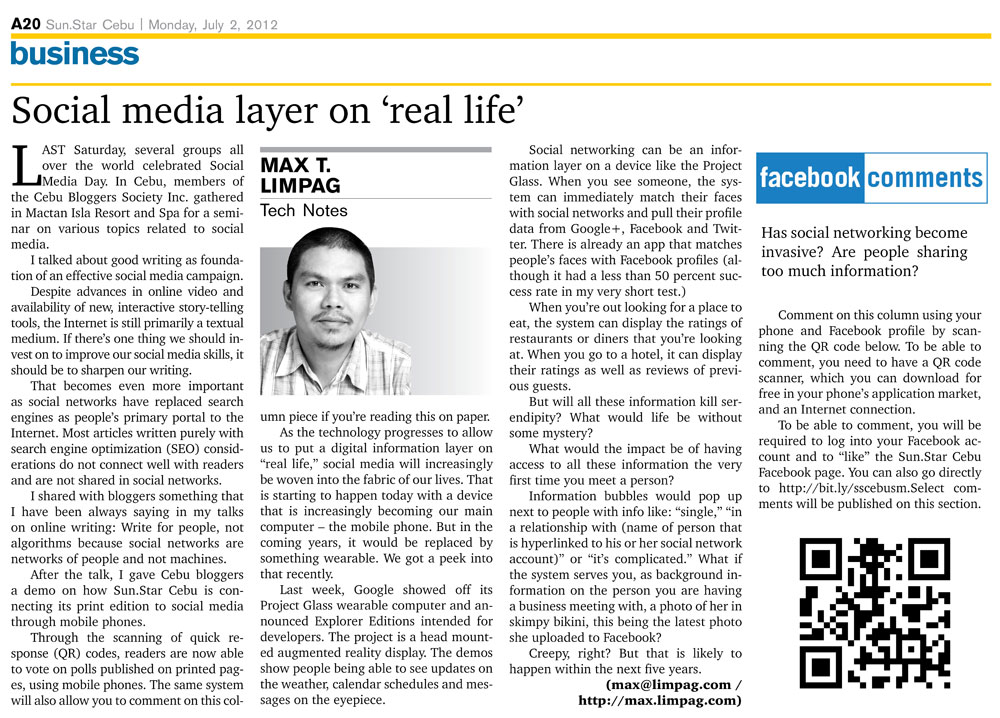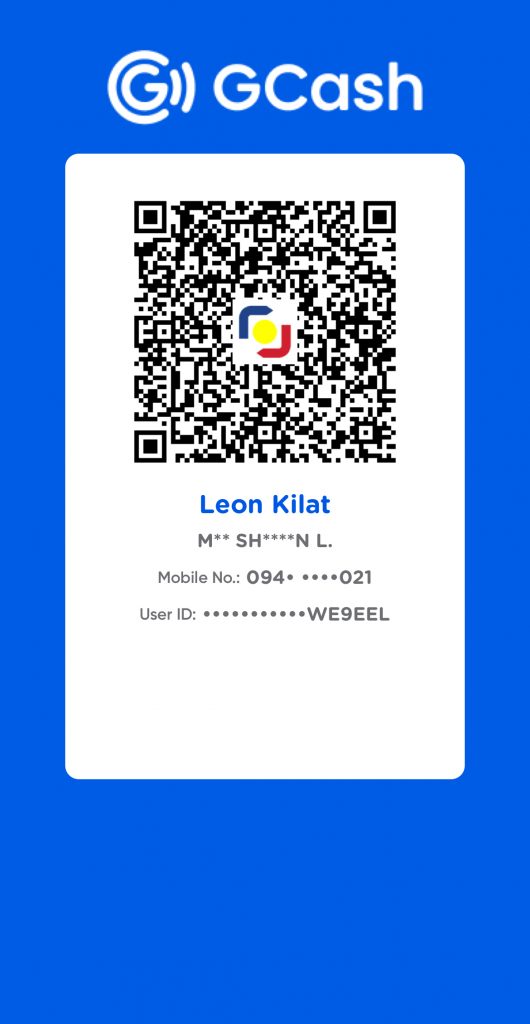Last Saturday, several groups all over the world celebrated Social Media Day. In Cebu, members of the Cebu Bloggers Society Inc. gathered in Mactan Isla Resort and Spa for a seminar on various topics related to social media.
I talked about good writing as foundation of an effective social media campaign.
Despite advances in online video and availability of new, interactive story-telling tools, the Internet is still primarily a textual medium. If there’s one thing we should invest on to improve our social media skills, it should be to sharpen our writing.
That becomes even more important as social networks have replaced search engines as people’s primary portal to the Internet. Most articles written purely with search engine optimization (SEO) considerations do not connect well with readers and are not shared in social networks.
I shared with bloggers something that I have been always saying in my talks on online writing: Write for people, not algorithms because social networks are networks of people and not machines.
After the talk, I gave Cebu bloggers a demo on how Sun.Star Cebu is connecting its print edition to social media through mobile phones.
Through the scanning of quick response (QR) codes, readers are now able to vote on polls published on printed pages, using mobile phones. The same system will also allow readers to comment on the printed edition of this column piece.

As the technology progresses to allow us to put a digital information layer on “real life,” social media will increasingly be woven into the fabric of our lives. That is starting to happen today with a device that is increasingly becoming our main computer — the mobile phone. But in the coming years, it would be replaced by something wearable. We got a peek into that recently.
Last week, Google showed off its Project Glass wearable computer and announced Explorer Editions intended for developers. The project is a head mounted augmented reality display. The demos show people being able to see updates on the weather, calendar schedules and messages on the eyepiece.
Social networking can be an information layer on a device like the Project Glass. When you see someone, the system can immediately match their faces with social networks and pull their profile data from Google+, Facebook and Twitter. There is already an app that matches people’s faces with Facebook profiles (although it had a less than 50 percent success rate in my very short test.)
When you’re out looking for a place to eat, the system can display the ratings of restaurants or diners that you’re looking at. When you go to a hotel, it can display their ratings as well as reviews of previous guests.
But will all these information kill serendipity? What would life be without some mystery?
What would the impact be of having access to all these information the very first time you meet a person?
Information bubbles would pop up next to people with info like: “single,” “in a relationship with (name of person that is hyperlinked to his or her social network account)” or “it’s complicated.” What if the system serves you, as background information on the person you are having a business meeting with, a photo of her in skimpy bikini, this being the latest photo she uploaded to Facebook?
Creepy, right? But that is likely to happen within the next five years.
Max is a journalist and blogger based in Cebu. He has written and edited for such publications as The Freeman, The Independent Post, Today, Sun.Star Cebu, Cebu Daily News, Philstar Life, and Rappler.
He is also a mobile app and web developer and co-founded InnoPub Media with his wife Marlen.

Leave a Reply